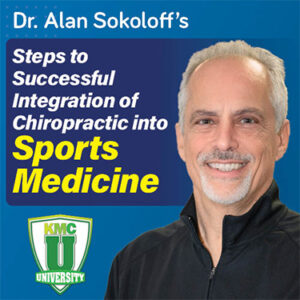Posted by Team KMCU on Aug 8, 2025
Summertime Travel Can Mean More Injuries for Patients and more “S” Codes for you
Hot Topics from the KMC University HelpDesk
Whether it’s lounging on the beach, camping in the mountains, or boating on a lake, more than 212 million American adults and their families intend to travel in August. That’s 82% of American adults! And just a little less than half of those people plan on traveling more than once. Summertime travel is huge in the US.
With increased travel comes the likelihood of increased injuries. It’s a prime time for patients to overdo it, twist something, or experience new aches. This increased patient volume, particularly with activity-related injuries, brings a critical focus to chiropractic compliance—especially surrounding the correct use of S codes for injuries.
The “S” chapter within ICD -10-CM is dedicated to Injuries, Poisoning, and Certain Other Consequences of External Causes. For Chiropractors, these codes are super important because they cover acute injuries like sprains, strains, and fractures, all of which can happen with increased summer travel and associated activities.
S codes require a high level of detail. You’ll need to hone in on the body region, the type of injury, and often the side of the body. Additionally, you may need to include severity and specific tendons, ligaments, or muscles.
Let’s break down the format of S codes to better understand their significance.
S codes consist of 7 characters. Each code begins and ends with a letter, while the five characters in between are usually numerical. However, an “X” may be used as a placeholder in some cases, notably in the fifth or sixth positions when laterality is not specified or necessary.
For example, the codes could look like S93.401A or S33.5XXA.
- The first character is always “S,” indicating it belongs to the S chapter of codes.
- The second and third characters are numbers that identify the major body region where the injury has occurred.
- Following these characters, there is a period.
- The fourth character, which is also numerical, specifies the type of injury within the body region specified by the second and third characters.
- The fifth and sixth characters provide additional information about the injury, such as a more specific location (like a particular vertebra, ligament, or muscle involved), laterality (indicating the right or left side), or the severity or type of injury (for example, partial versus complete tear). If these details do not apply, “XX” may appear in these positions.
- Finally, the seventh character represents the “encounter” extension, which is crucial as it communicates the current phase of the patient’s treatment for that injury. There are three options for this character:
- A = Initial encounter (the patient is in the acute phase and receiving active treatment)
- D = Subsequent encounter (the patient is in the healing or recovery phase and receiving routine follow-up care)
- S = Sequela (indicating a late effect or complication of the initial injury, after the acute phase has passed)
The seventh character is tricky!
Many Chiropractors will only use the “A” for the E/M visit of a new injury, but we should be using the A in the seventh spot for the duration of the active care phase, not just the initial encounter or first E/M visit. In many situations, Chiropractors will only use “A” so it’s important to understand payer policies on code use.
Documentation is Key
Finally, the precision needed for this code must come from somewhere. You guessed it! Your documentation! If you aren’t specific in your notes about the location, laterality, mechanism, affected soft tissue, and severity, how can the code accurately reflect what you are treating? The detail in the S code comes from the detail in your notes, so maintain consistent and specific charting.
As we embrace the lively summer travel season, it’s important for chiropractors to focus on precise coding to navigate the complexities of patient care and compliance with confidence. The well-structured S codes are essential tools that require meticulous documentation, capturing the unique details of each injury. By mastering these codes and keeping thorough notes, chiropractors can greatly improve compliance while ensuring that patients receive the best possible care and can continue to enjoy summer!
Dr. Erin Stubblefield graduated from Palmer College of Chiropractic in Davenport, IA in 2006. After practicing privately, she transitioned to teaching chiropractic education for 13 years before joining KMC University as a Specialist in 2024. Currently, Dr. Stubblefield is the owner of Sunflower Consulting, LLC, a healthcare consulting and practice coaching group. Dr. Stubblefield partners with KMC to provide accurate, current, and compliant information. For further information, you can reach her at drerin@kmcuniversity.com.








Comments on “S” Codes: Don’t Let Summertime Injuries Lead to Compliance Headaches